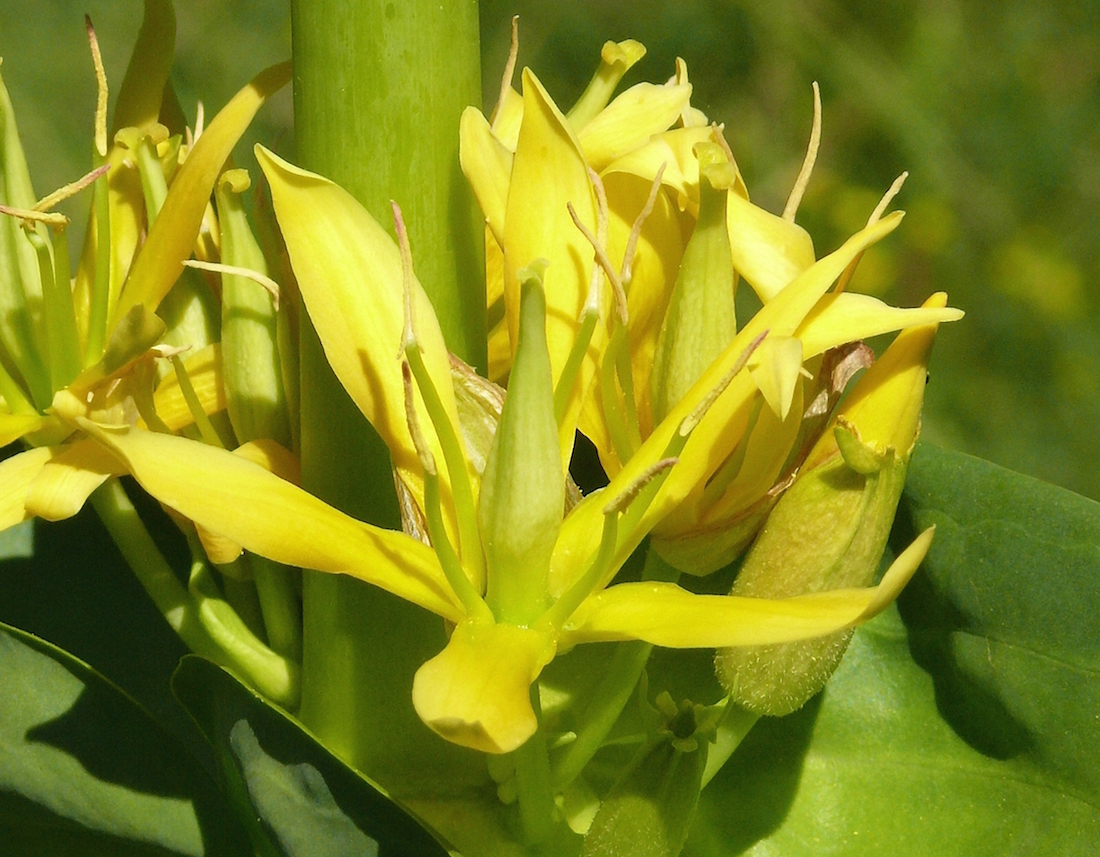
Planting the Rainbow: Incorporate Plants Into Your Garden Based On the Color of the Blooms
Gardening is a hobby that can fulfill both the utilitarian as well as the aesthetic sensibilities within the human soul, but you don’t always find both in the garden. I grew up with gardens that were either designed around production and output or designed for aesthetic purposes. However, you don’t have to choose. Planting the rainbow brings aesthetics and function together in perfect harmony.
My dad grows a vegetable garden, everything is in neat rows, all the plants there eventually come into the house to be served at the table, so there is little concern for the visual appeal of the space. Juxtaposed with that, mother’s flower beds were a spray of color and texture, where all the plants were meant to please the eye and bring a smile. While there’s nothing wrong with either approach, with a little consideration we can have both function and fantasy in the herb garden.
Utility is of course a concern in the herbal garden as we grow not only for enjoyment and close relationship to the plants but for use in the home apothecary. In the herb garden, we have the opportunity to incorporate such a wide range of height, color, and texture variance in plant life. With blooms and foliage in many shades and tones, planting the rainbow is easily accomplished while still filling your home apothecary with the essentials.
Planting the rainbow is not so much about fitting every color of the rainbow in your garden all at the same time. Although you can choose to incorporate every color if you wish, this could look and feel too busy. Instead, it can be very useful to pick a color scheme.
Let’s look at some basic information about color theory and color therapy to help us understand methodologies for selecting our color palette, and then we’ll look at herbal allies for each color of the rainbow.
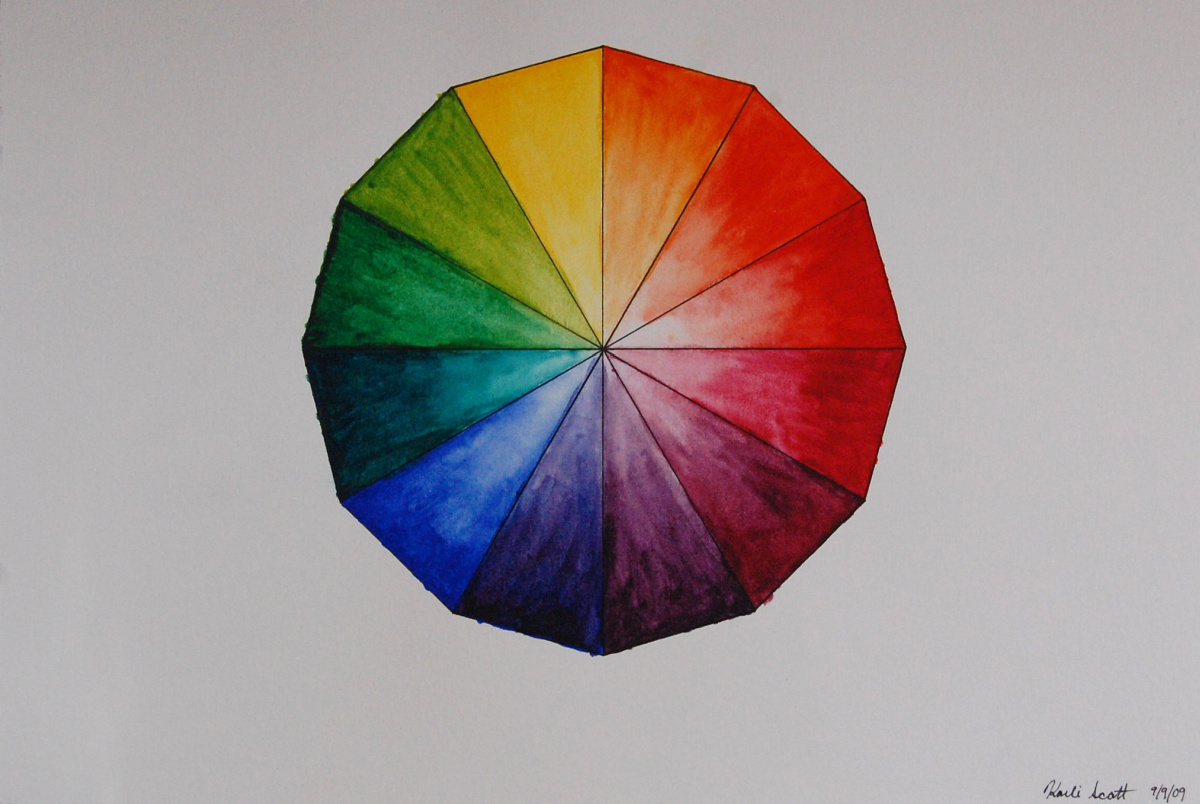
Color Theory
Color theory, much like herbal crafting, is a blend of both science and art. By understanding the basics of the color wheel and the ways the colors relate and work with each other, we can make choices that help to set a mood for our outdoor space. Colors on the color wheel are divided into primary, secondary, and tertiary color groups.
Red, yellow, and blue are all primary colors. Secondary colors are made by combining two primary colors. Purple, orange, and green are all secondary colors. Then you have the tertiary colors, which are created by mixing neighboring primary and secondary colors. For example, chartreuse is a yellow-green and teal is a blue-green; vermillion is a red-orange and amber is a yellow-orange.
The primary, secondary, and tertiary colors are all considered to be true hues. When you add a bit of black to any of these hues, you get a shade of that color. Red with a bit of black becomes burgundy. Adding white to any of the hues produces a tint. Red with a bit of white becomes pink. Then, if you were to mix gray (a little black and a little white) to any hue you would get a tone. Red with a bit of gray creates mauve. Combining different shades, tints, or tones of any color can help to add richness, pop, and greater variety once you have decided what colors you want to incorporate into the garden.
Colors opposite each other on the color wheel are called complementary. Complementary colors accentuate one another through contrast- think red and green. Neighboring colors on the color wheel are harmonious because they cooperate rather than oppose each other. Complementary colors will stand out when placed next to each other. Harmonious colors create a sense of cohesion (Vernon, 2018).
Now that we know a bit more about the art and science of color variance and combination, let’s take a look at how colors can make us feel.
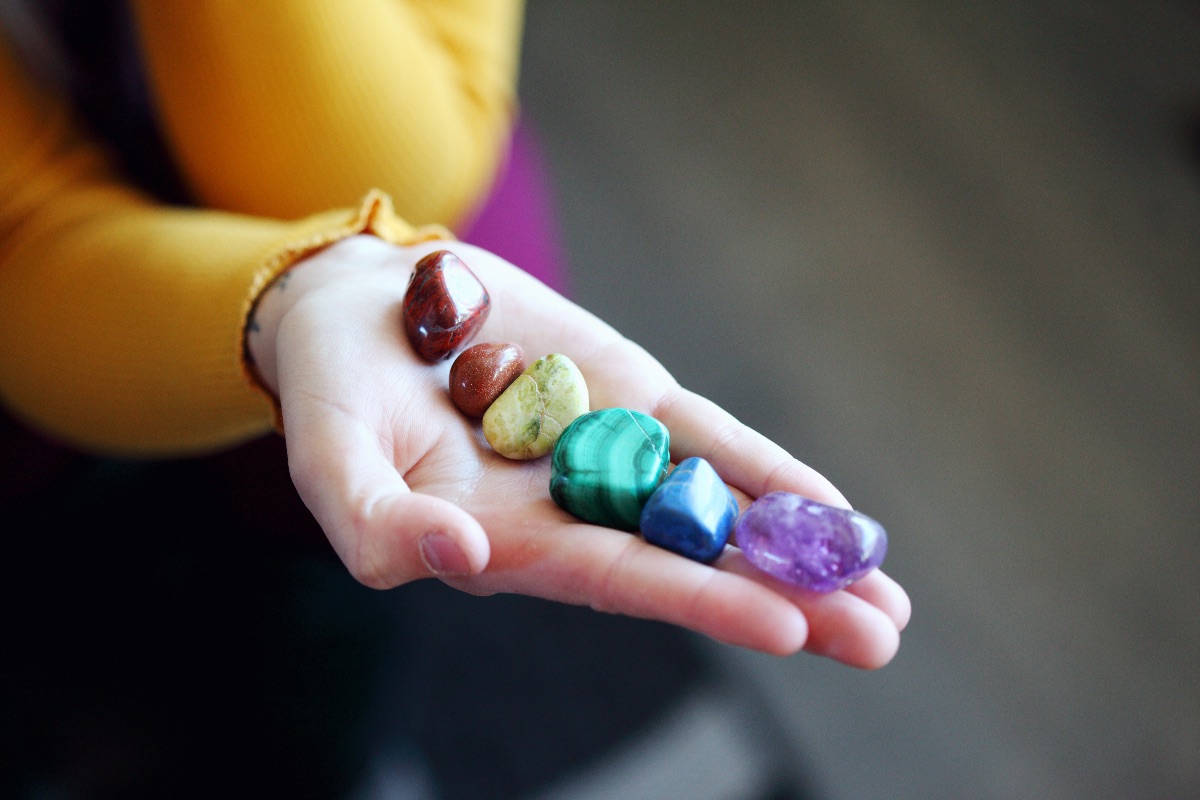
Chromotherapy or Color Therapy
Color therapy can also help you when you are choosing the color scheme you want to plan your garden around. According to chromotherapy, different colors affect our mental and emotional state differently. Generally, warm colors (red, orange, yellow) are considered to be energizing, and cool colors (blue, green, purple) are considered to be calming.
- Red is invigorating
- Orange energizes
- Yellow is highly stimulating
- Green eases stress
- Blue is calming
- Purple is soothing
(Azeemi & Raza, 2005)
With this knowledge, you can choose the right colors for how you want to feel in your garden. Using warm colors in your garden can help you to feel inspired, creative, and energized in your outdoor space. By using cool colors, you will create a relaxing and stress-relieving garden experience. Here are some ideas on blooms to plant for each color of the rainbow.
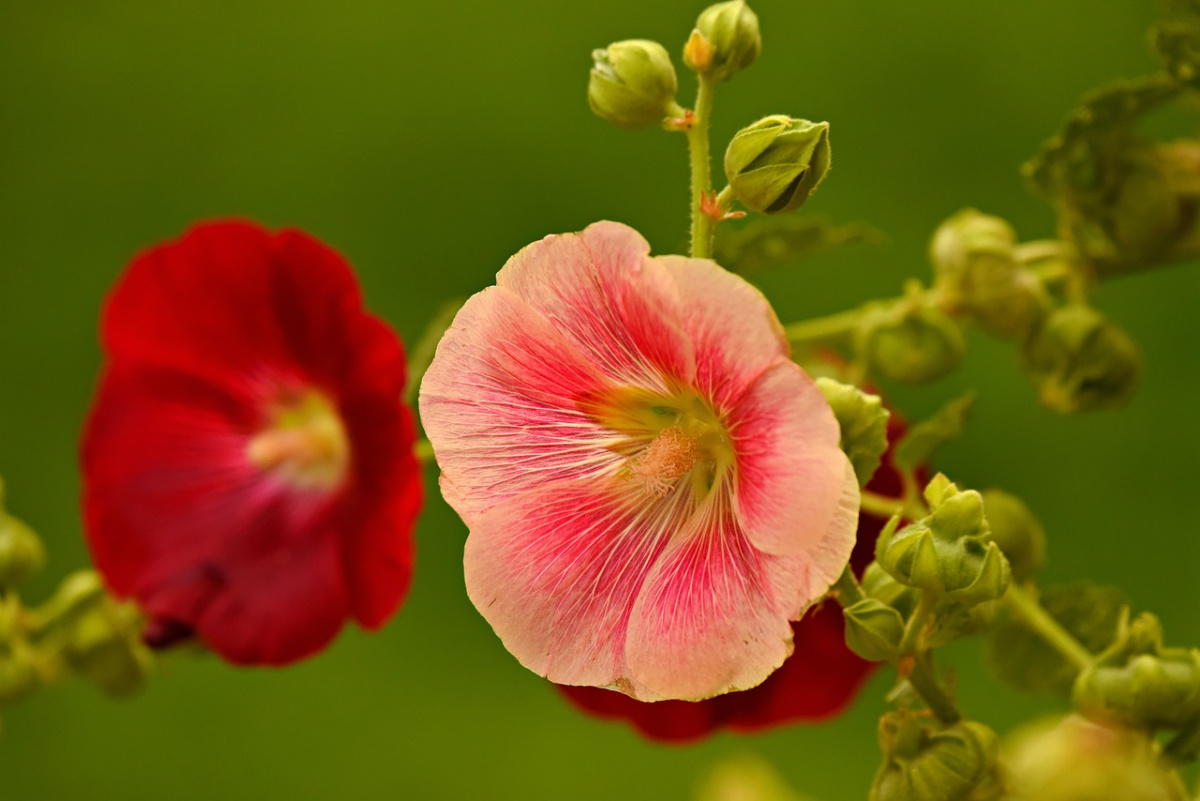
Red
Hollyhock (Alcea spp.) is a tall and long-blooming plant that comes in several shades and tints of red. While hollyhock is happy to make a home in just about any soil type, this plant ally prefers full sun and moderate watering. Hollyhock flowers contain mucilage and are great for soothing the intestinal tract from the throat down (Hartung, 2011).
Roses (Rosa spp.) are a classic and grand garden plant, sure to elevate your outdoor space. These plants need rich and well-draining soil, with full sun. They require regular feeding and seasonal pruning to thrive but are well worth the effort. Flowers come in colors from white to red, and some species also produce red hips in the fall and winter. The flowers are tonifying and soothing to skin tissue, and the hips are rich in vitamin C (Chevallier, 2000).
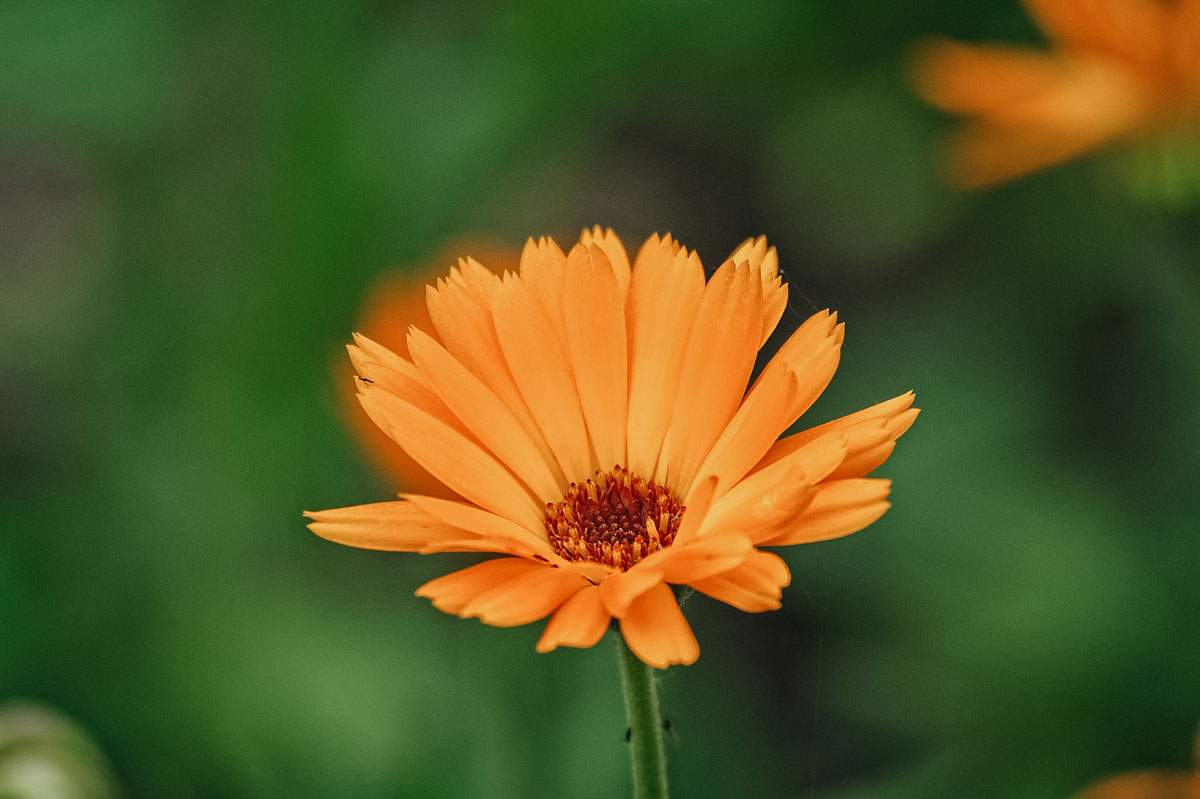
Orange
Calendula (Calendula officinalis) is a clumping annual, with bright orange to yellow-orange blooms. This sunny little plant is not picky about the soil conditions where it grows but needs full sun and regular watering. Calendula is an ally appropriate for calming external and internal irritation of the integumentary tissues (Hartung, 2011).
California poppy (Eschscholzia californica), an herbaceous annual, blooms in bright orange. This plant ally is voracious, growing in nearly any type of soil, spreading itself, and thriving in partial shade to full sun exposure. Being native to drier climates, California poppy has a low to moderate requirement for water. Used as a sleep aid, this plant is a relaxing nervine (Hartung, 2011).
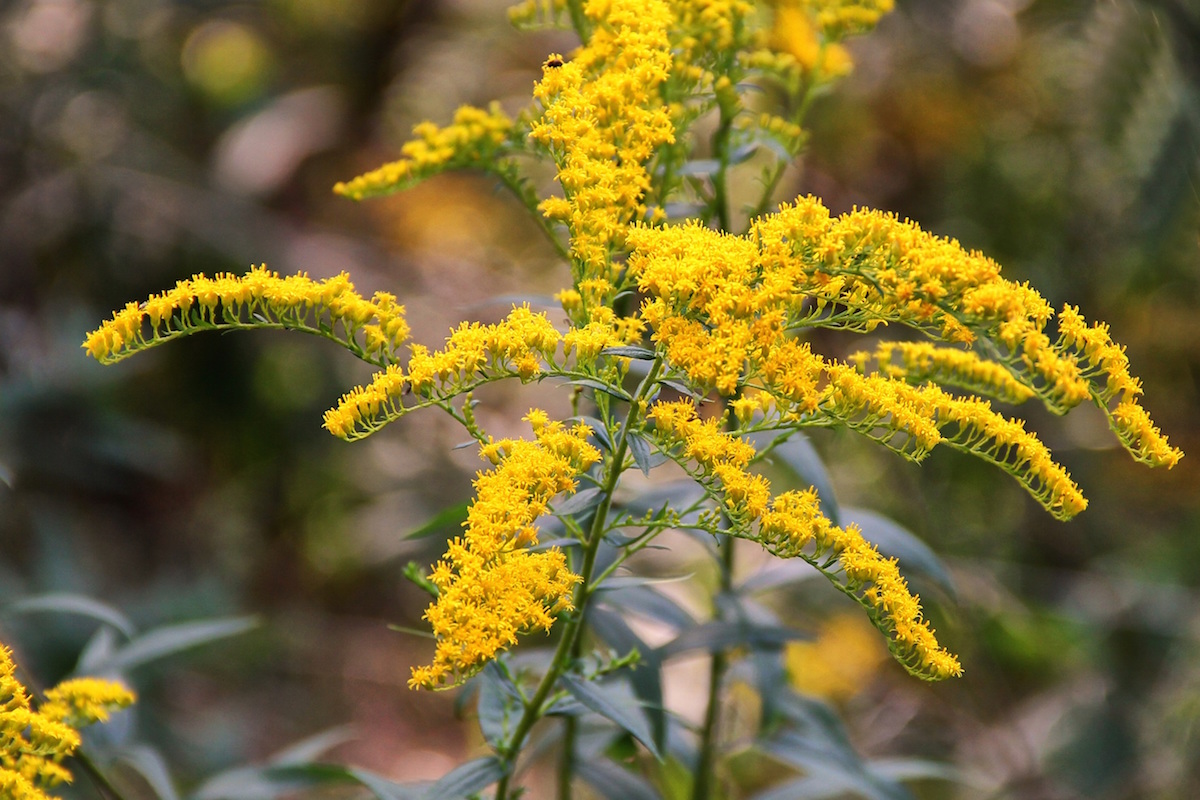
Yellow
The great yellow gentian (Gentiana lutea) can reach 3-4 feet in height and bears whorls of yellow flowers that stack up the stem as they stretch for the sky. Full sun to partial shade is preferable for this plant, and it does best in soil that is rich, well-drained, and moist. Water regularly for best results (Brickell, 2019). Gentian is a bitter tonic, supporting the digestive organs (Chevallier, 2001).
Goldenrod (Solidago spp.) gives a bright spray of yellow flowers that can grow to be up to a couple of feet tall. Often seen growing along roadsides, on mountains, and in prairies, goldenrod is happy to make its home in any soil type and just needs regular watering to thrive. Goldenrod’s only request is that you place it in full sun. As an herbal ally, goldenrod is supportive for soothing the urinary or respiratory systems (Hartung, 2011).
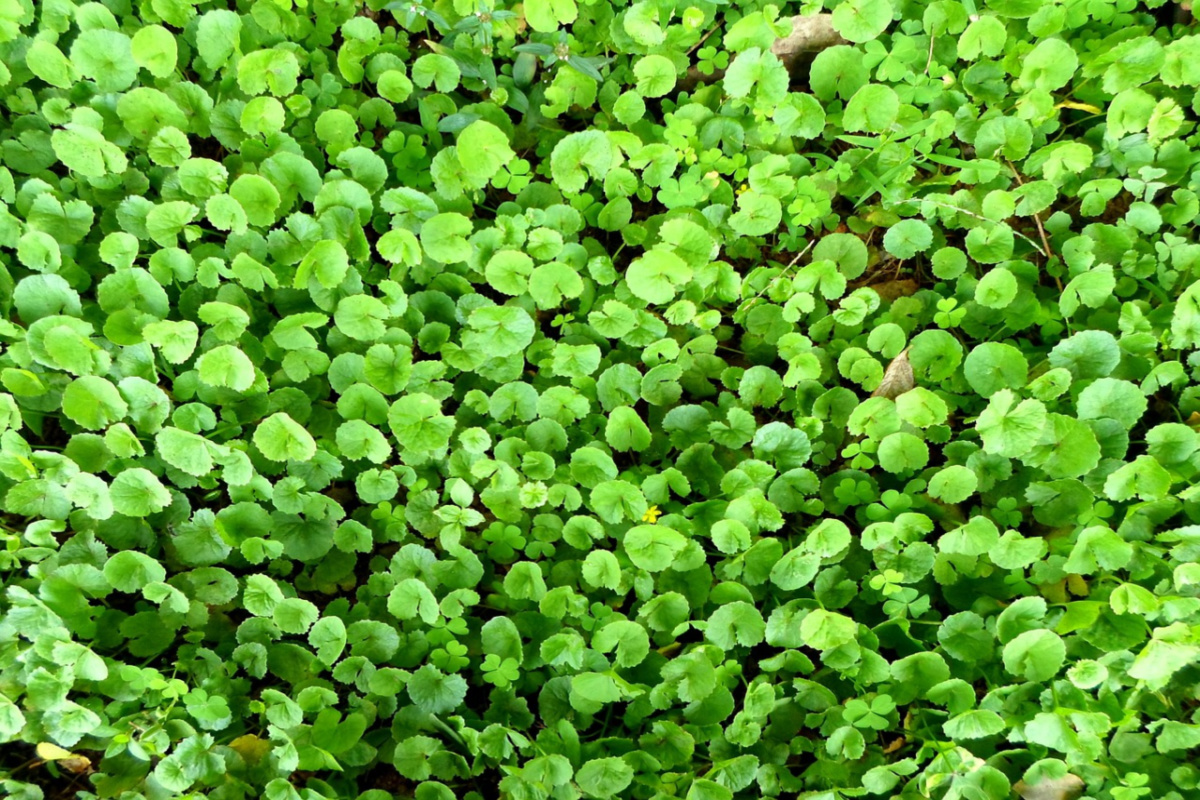
Green
Maidenhair fern (Adiantum spp.) is a semi-evergreen, perennial fern. The dainty leaves and thin stems give this fern an ethereal kind of look. Preferring partial shade, it can tolerate slightly acidic soil types and loves a good amount of moisture, so water frequently (Brickell, 2019). This fern has been used as an ally for the respiratory system in Western herbalism since the 18th century (Chevallier, 2000).
Gotu kola (Centella asiatica) is a tender, creeping perennial. It prefers to lay low and appreciates partial to full shade where it grows. It also prefers rich or loamy soil and needs regular, frequent watering. This herbal ally supports cognitive function and can help the skin by assisting in the removal of metabolic waste (Hartung, 2011).
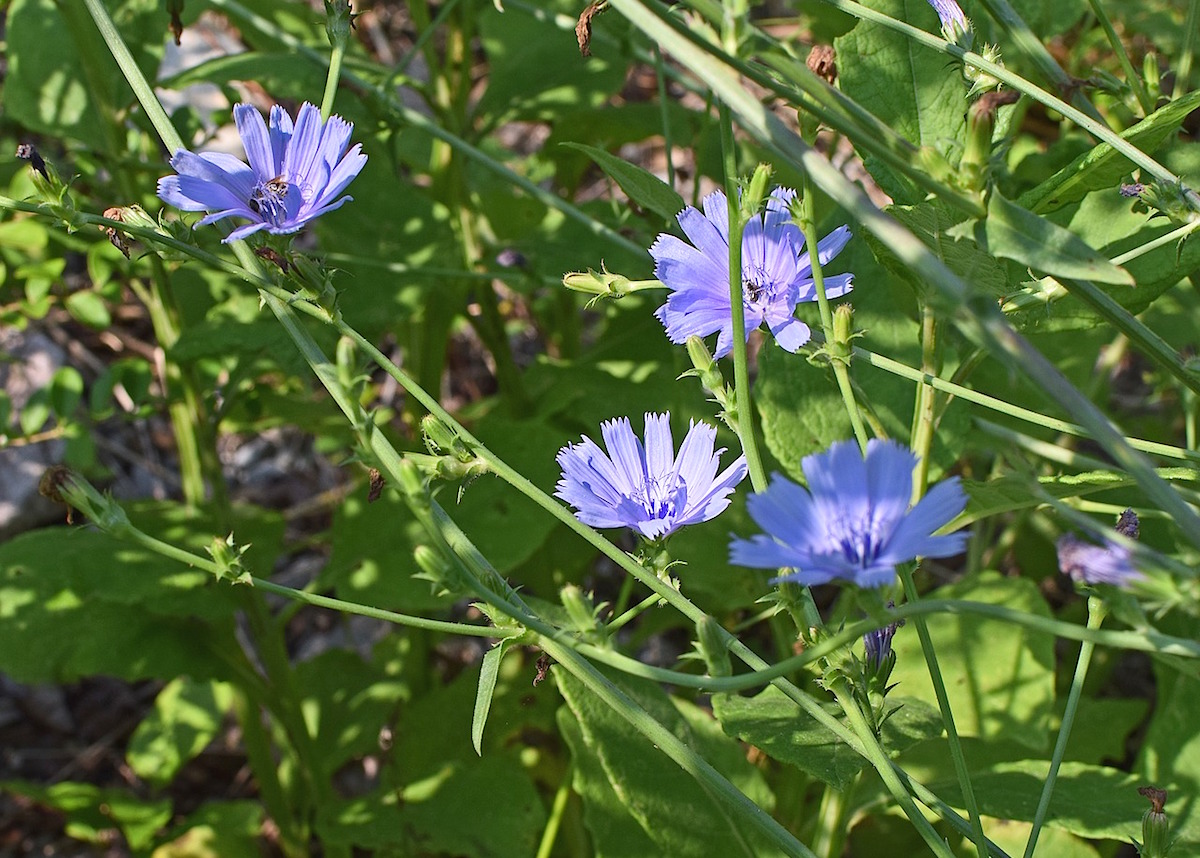
Blue
The beautiful, blue, star-shaped flowers of borage (Borago officinalis) are absolutely delightful. Doing best in full sun to partial shade with regular watering, borage has no preference for the type of soil where it grows. The flowers can be eaten as a garnish, in a salad, or frozen in ice cubes for added flair at your summer get-togethers. Borage leaves are considered a friend to the skin, and the ovo-uterine system (Hartung, 2011).
The blue, daisy-like flowers of chicory (Cichorium intybus) bloom on tall stalks. Chicory is another herbal ally that can often be found along roadways in North America, and likes to have access to a full day of sun in the garden. With regular watering, and well-draining soil, chicory is happy to make its home almost anywhere (Brickell, 2019). Chicory is mildly bitter and supports the liver and digestive tract (Chevallier, 2000).
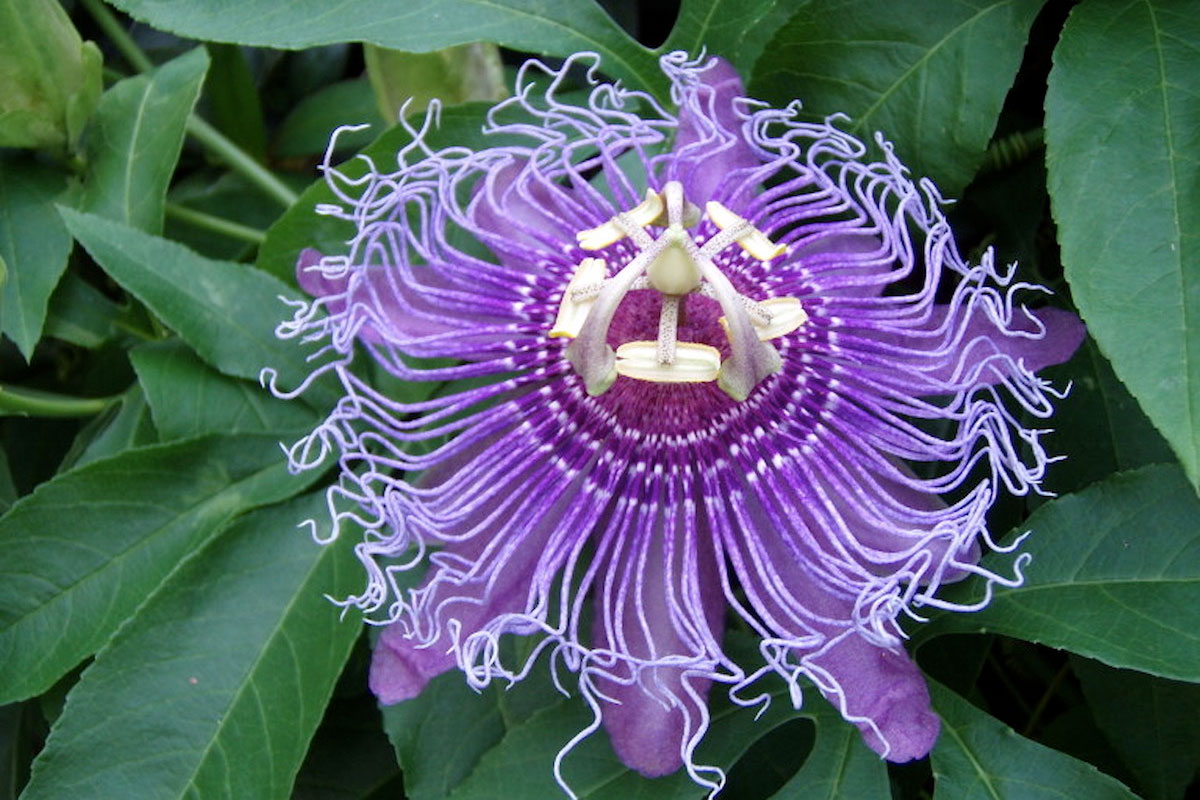
Purple
Passionflower (Passiflora incarnata) is a tender, vining perennial that is native to the warm humid climate of the southeastern United States. It prefers rich, loamy soil, frequent watering, and partial to full shade. The flowers of this plant are an exotic spray of white and lavender. This herbal ally soothes the mind and smooths out the nervous system; it can help lull the overactive mind into restful sleep (Hartung, 2011).
Chives (Allium schoenoprasum) are a delicious culinary herb and all edible onion family members share similar volatile oil profiles that are shown to have antiseptic properties (Chevallier, 2000). This clumping perennial prefers well-drained soil and plenty of sun where it grows. Water your chives regularly for best results, and in spring you will be delighted by the purple burst of flowers (Brickell, 2019).
In Closing,
There are so many great options for incorporating color and creative design into your garden space. It would be impossible to cover all of the options in one article, but it is my hope that this will help you to start in the direction of considering the aesthetic as well as the utilitarian function of your garden space.
By understanding some of the basics of color theory and color therapy you can begin to make aesthetic choices about how you want to feel in your garden. From there you can incorporate herbal allies that support you mentally and emotionally upon sight, as well as support the various systems of the body in their use. Check out the reference list below for books that could be useful to you as you move forward with planting the rainbow.
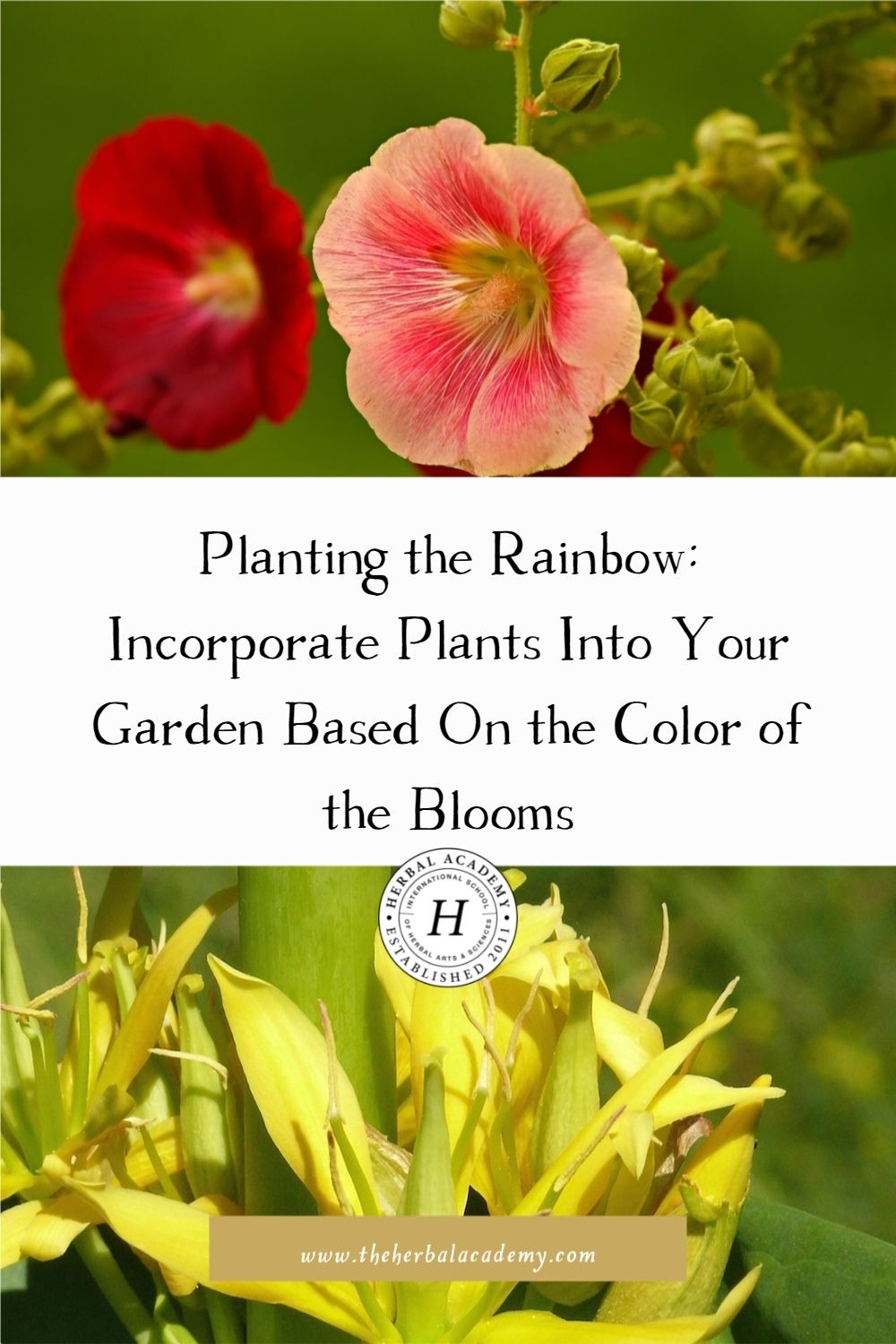
REFERENCES
Azeemi, S.T., & Raza, S.M. (2005). A critical analysis of chromotherapy and its scientific evolution. Evidence-Based Complementary and Alternative Medicine: eCAM, 2(4), 481–488. https://doi.org/10.1093/ecam/neh137
Brickell, C. (2019). Encyclopedia of plants & flowers. (4th edition). DK Publishing.
Chevallier, A. (2000). Encyclopedia of herbal medicine: The definitive reference to 550 herbs and remedies for common ailments. Dorling Kindersley.
Hartung, T. (2011). Homegrown herbs: A complete guide to growing, using, and enjoying more than 100 herbs. Storey Publishing.
Vernon, A. (2018). The flower-powered garden. Timber Press.







